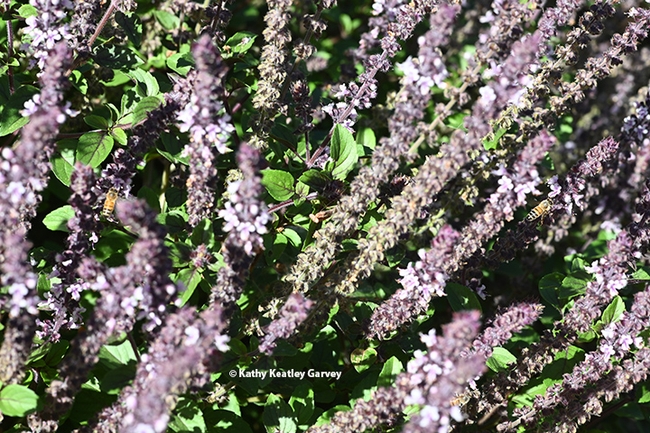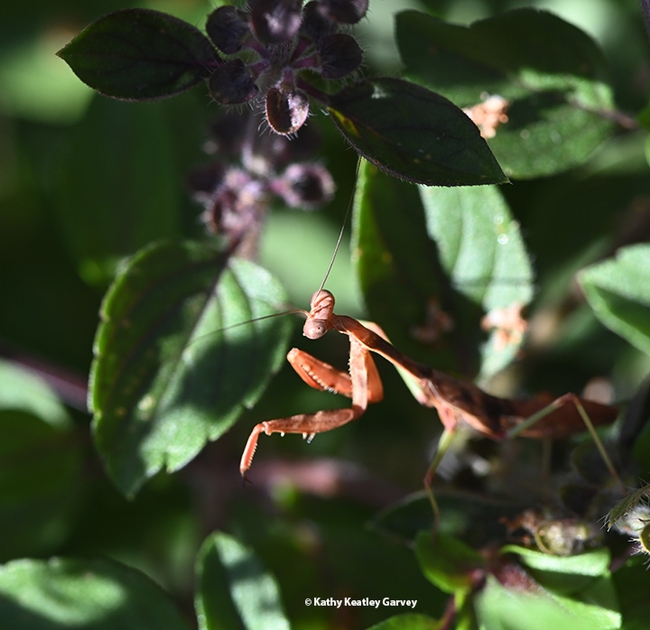Honey bees absolutely love African blue basil. If there ever were a "bee magnet," this plant is it.
We first learned of African blue basil, (Ocimum kilimandscharicum × basilicum 'Dark Opal'), through Gordon Frankie, UC Berkeley professor and the late Robbin Thorp, distinguished emeritus professor of entomology at UC Davis. They co-authored the book, California Bees and Blooms: a Guide for Gardeners and Naturalists with Rollin Coville and Barbara Ertter, also affiliated with UC Berkeley.
We plant it every year in our pollinator garden. Wikipedia calls African blue basil "a cross between camphor basil and dark opal basil. "African blue basil plants are sterile, unable to produce seeds of their own, and can only be propagated by cuttings.
"All parts of the flower, leaves and stems are edible; although some might find the camphor scent too strong for use in the kitchen, the herb reportedly yields a tasty pesto with a 'rich, mellow flavor' and can be used as a seasoning in soups and salads, particularly those featuring tomato, green beans, chicken, etc.," Wikipedia tells us. "The leaves of African blue basil start out purple when young, only growing green as the given leaf grows to its full size, and even then retaining purple veins. Based on other purple basils, the color is from anthocyanins, especially cyanidin-3-(di-p-coumarylglucoside)-5-glucoside, but also other cyanidin-based and peonidin-based compounds."
A final note that Wikipedia relates: It "blooms profusely like an annual, but being sterile can never go to seed. It is also taller than many basil cultivars. These blooms are very good at attracting bees and other pollinators."
Right. "These blooms are very good at attracting bees and other pollinators."
Wikipedia forgot to mention that blooms are "very good at attracting predators," like praying mantids. They go where the bees are, and the bees are in the African blue basil.
Can you find the mantis in the image below?
Attached Images:

In this image, you can see two bees on the African blue basil. But can you find the praying mantis? (Photo by Kathy Keatley Garvey)

Oh, there you are, praying mantis! Enjoying a little sunshine, hmm? This one is a male subadult male Stagmomantis limbata, as identified by mantis expert Lohit Garikipati, a UC Davis alumnus now studying for his master's degree at Towson (Maryland) University. (Photo by Kathy Keatley Garvey)